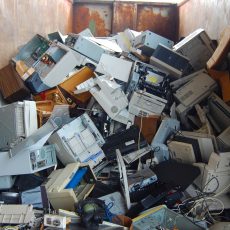Thankfully, the concept of a circular economy has gained significant traction as we grapple with the consequences of traditional linear economic models.
Read moreRecycling
Recycling steel is great. But decarbonizing the industry is better.

Steel provides the necessary framework for roads, bridges, railways, housing, and every type of transportation modality. It’s also used in abundance in household appliances like fridges, cooking utensils like saucepans, furniture, and surgical instruments. It seems even
Read more8 Places You’d Be Surprised To Find Plastic…But It’s There!

One of the most challenging changes to make in our lives is removing plastic. But the thing is, it’s also one of the most impactful changes you can make!
Read moreHow sustainable is solar, really?

This isn’t a question of the sustainability of the power source, ie., the sun. Obviously, there’s no concerns there. But the sun’s radiative energy doesn’t spontaneously provide power to switch on the lights, it requires some pretty
Read moreThe problem with Greenwashing, and how to spot it

You’ve probably noticed the sudden abundance of products which are eco-friendly, environmentally friendly, green, biodegradable, sustainable, natural, sourced sustainably, recycled, recyclable, compostable, and so on and so forth. There’s an exhausting list of terms which could be
Read morePlastic Pollution Solutions

Today, we’re talking plastic. Some facts: If you didn’t know, plastic is made from petroleum. About 8.3 billion tonnes of plastic has been produced since the 1950s, which is roughly the weight of a billion elephants or 47 million blue whales. And only about 9% of that plastic has ever been recycled, 12% has been burned and the remaining 79% has ended up in landfills or the environment.
Plastic pollution is the most widespread problem affecting our marine environments. It threatens ocean health, food safety and quality, human health, coastal tourism, and contributes to climate change.
Read moreE-Waste 101

According to the UN University, every year the world produces approximately 50 million metric tons of electronic or e-waste. This includes computers, monitors, laptops, cell phones, TVs, stereos, kitchen appliances, plugs and cables, among other things.
Our ever-increasing demand for the newest, fastest devices and the latest technology, and retailers’ rush to provide, as well as stir this demand, has created what the Executive Director of the UN Environmental Program has called a “tsunami of e-waste rolling out over the world.”
Read moreWhere Your Computer Goes to Die…

Every year the world produces approximately 50 million metric tons of electronic or “e-waste” according to the UN University. This is more than the weight of all the commercial aircraft ever made, looks like 4,500 Eiffel Towers, is enough to completely cover an area the size of Manhattan, and is roughly worth $62.5 billion USD.
Read moreRecycling: Do’s and Don’ts

While most people have access to a recycling program, very few of them come with an instruction manual. This week Lexi breaks down recycling. What you can recycle and what you cannot.
Read moreWhen going round & round in circles is a good thing

The current linear model of resource management, based on fast production and consumption, is unsustainable in the long run. An alternative to that model, the circular economy, is restorative in essence, allowing to reuse materials at the
Read more
